You can join pendant chains using five clever techniques that’ll elevate your jewelry-making skills. Start with jump rings for simple, versatile connections by twisting them sideways to attach pendants securely. Try split rings for heavier pieces, as they offer superior holding power like tiny keychains. Wire wrapping transforms connections into decorative focal points, while soldering creates permanent, seamless bonds. Connector bars and bridge elements let you showcase multiple pendants elegantly, and mastering these methods will reveal even more advanced jewelry assembly possibilities.
Jump Ring Connection Method
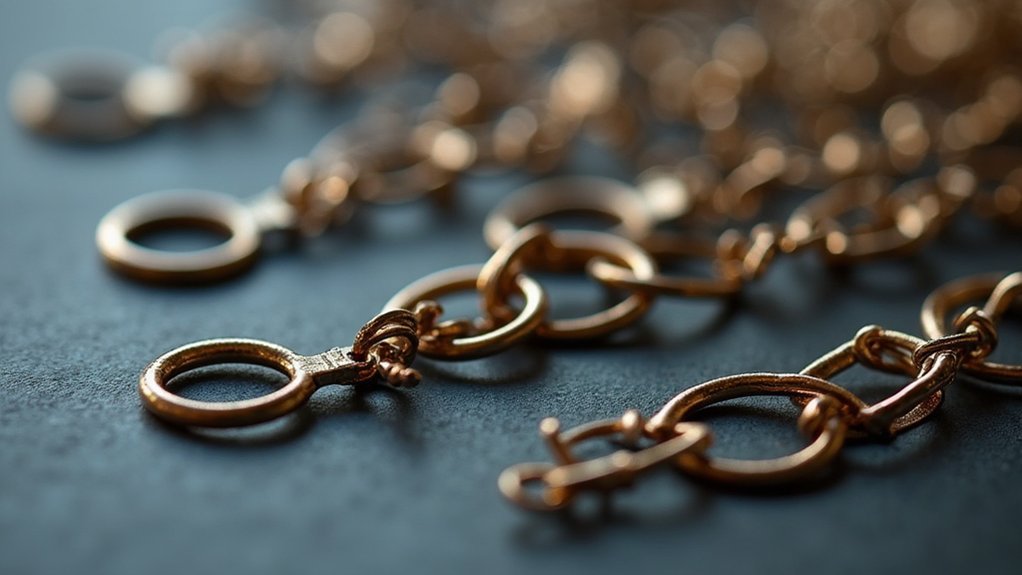
One of the simplest yet most versatile methods for attaching pendants to chains involves using jump rings—small metal connectors that you can easily manipulate with basic jewelry pliers.
To execute this technique, grip the jump ring with your pliers and gently twist it open sideways—never pull it apart. Slip the ring through your pendant’s loop or bail, then securely close it.
Next, reopen the jump ring to connect it to your desired chain link, creating unique and personalized combinations.
Jump rings come in various sizes and materials, so select ones that complement both your pendant and chain for a cohesive appearance.
Always test your connection by gently tugging the pendant to verify it’s properly secured and won’t detach unexpectedly.
Split Ring Attachment Technique
Split rings offer a more robust alternative to jump rings when you’re working with heavier pendants or pieces that’ll experience frequent movement.
These metal rings function like tiny keychains, providing superior holding power that prevents pendants from slipping off your chain.
Split rings work like miniature keychains, delivering exceptional grip strength that keeps your pendants securely fastened to any chain.
To attach using split rings, you’ll need pliers to gently twist one end apart, creating enough space for your pendant.
Slide the pendant onto the ring first, then thread the ring through your chosen chain link.
Verify the ring closes completely for maximum stability.
The split ring’s design creates a stronger connection than traditional jump rings, making it perfect for valuable or weighty pieces.
When adding multiple pendants, use separate split rings for each one to maintain organization and prevent tangling during wear.
Wire Wrapping Chain Links
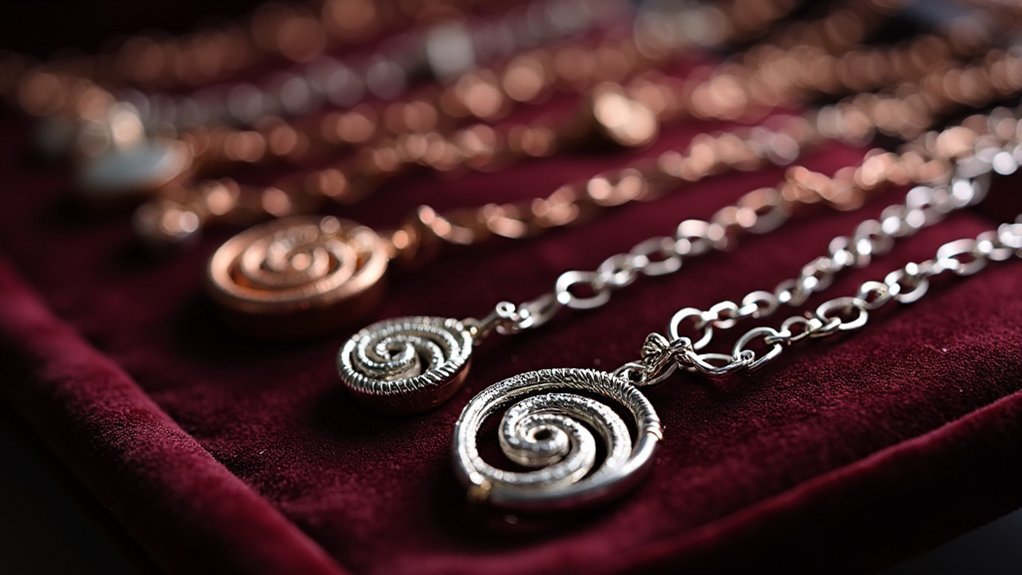
Wire wrapping transforms simple chain connections into decorative focal points while delivering exceptional security for your pendants. You’ll create professional-looking attachments that won’t fail under daily wear.
Cut your wire at least twice the distance between your pendant and chain link. This extra length guarantees multiple secure wraps. Start by forming a tight loop around your pendant’s bail, leaving sufficient wire for the chain connection.
| Step | Action |
|---|---|
| 1 | Cut wire twice the pendant-to-chain distance |
| 2 | Loop wire tightly around pendant bail |
| 3 | Wrap remaining wire around chosen chain link |
| 4 | Make multiple tight, close wraps for stability |
| 5 | Trim excess and tuck ends to prevent sharp edges |
Wrap the remaining wire around your selected chain link multiple times, keeping each wrap tight and close together for maximum strength.
Soldering Chain Segments Together
Soldering creates permanent, seamless connections between chain segments that eliminate weak points and provide unmatched durability for your pendant attachments.
You’ll need a soldering iron or torch plus compatible solder that matches your chain’s metal composition for ideal bonding strength.
Start by thoroughly cleaning each chain segment to remove dirt, oils, and oxidation that could interfere with proper adhesion.
Heat the metal pieces until they reach molten state, then apply solder to create fusion at the joints.
Always wear protective eyewear and gloves to prevent burns during this high-heat process.
Once you’ve completed the soldering, let your chain cool completely before handling it.
Finally, polish the soldered areas to maintain uniform appearance and guarantee your connection looks professionally finished throughout the entire piece.
Using Connector Bars and Bridge Elements
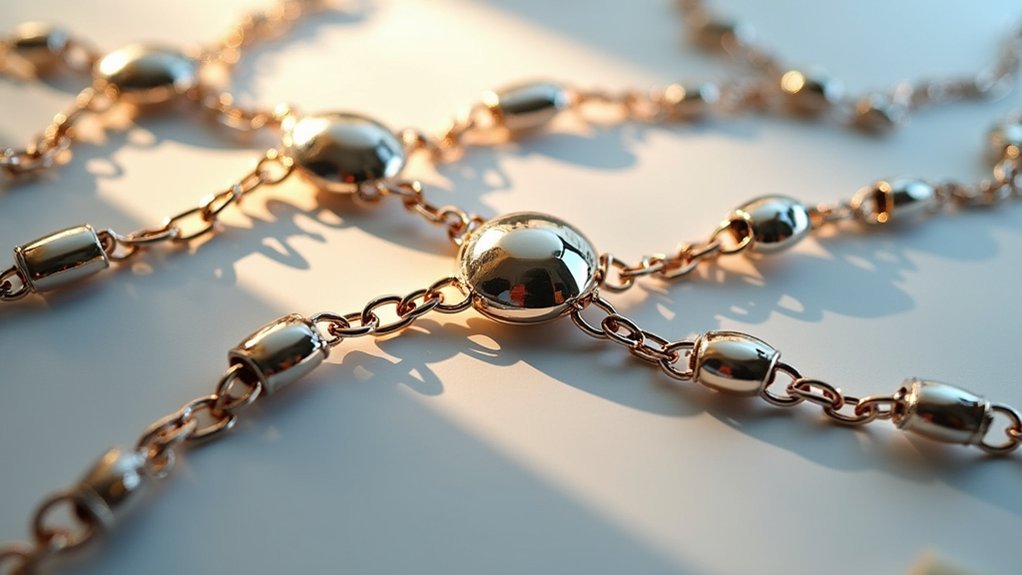
When you want to showcase multiple pendants on a single chain without overcrowding, connector bars and bridge elements offer an elegant solution that creates visual harmony while maintaining structural integrity.
These components link pendants together, guaranteeing they hang evenly and creating a stable display platform.
Bridge elements create seamless shifts between pendants, enhancing their visual connection and enabling creative layering without additional chains. You can use varying connector bar lengths to add dimension, positioning each pendant at different heights for an eye-catching layered effect.
When selecting materials, maintain harmony between connector bars, pendants, and chains for a cohesive appearance.
Secure these elements properly using jump rings or bails to prevent detachment during wear and guarantee lasting stability.
Frequently Asked Questions
How to Connect Necklace Chain Together?
You’ll connect necklace chains using jump rings – open them with pliers, thread through both chain ends, then close securely. Alternatively, use lobster clasps or wire wrapping for stronger, more decorative connections between chain segments.
How Do You Connect Two Necklaces Together?
You’ll connect two necklaces by using jump rings to attach both pendants to one chain link. Alternatively, you can slide one pendant’s bail directly onto the other necklace’s chain for seamless joining.
How to Wear Two Pendants on One Chain?
You’ll need jump rings or bails to attach both pendants securely to your chain. Choose a longer chain, balance pendant sizes for visual appeal, and experiment with different arrangements for a dynamic, layered look.
How to Get a Pendant on a Chain That Doesn’t Fit?
You’ll need jump rings to connect incompatible pendants and chains. Alternatively, attach a bail for a larger loop, use wire wrapping techniques, or switch to a longer chain with extender links.
In Summary
You’ve now mastered five effective techniques for joining pendant chains, from simple jump rings to professional soldering methods. Whether you’re creating layered necklaces or repairing broken jewelry, these skills’ll give you the versatility to tackle any chain-linking project. Practice each method to determine which works best for your specific materials and design goals. With these techniques in your toolkit, you’ll confidently create stunning, durable chain connections every time.

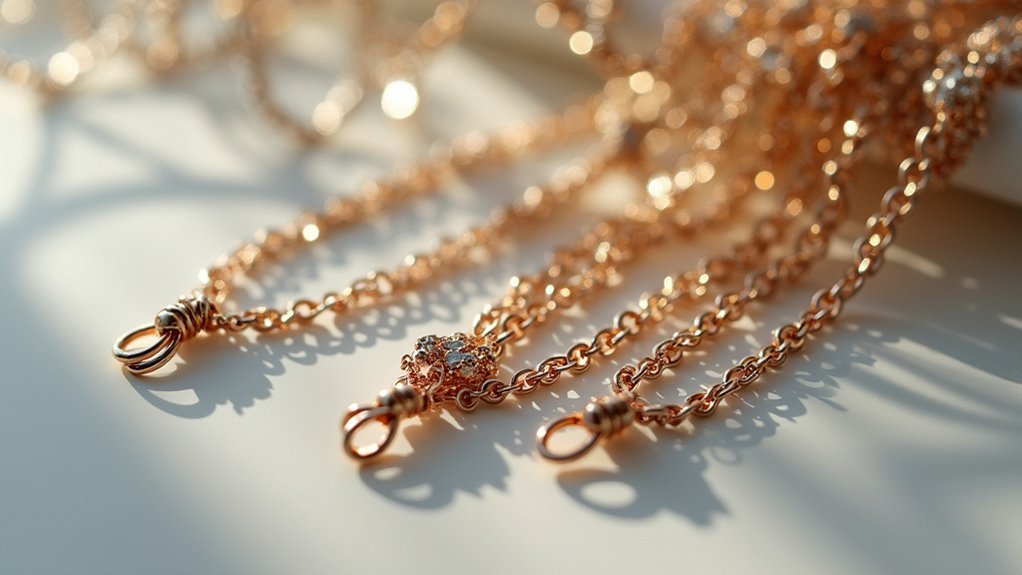

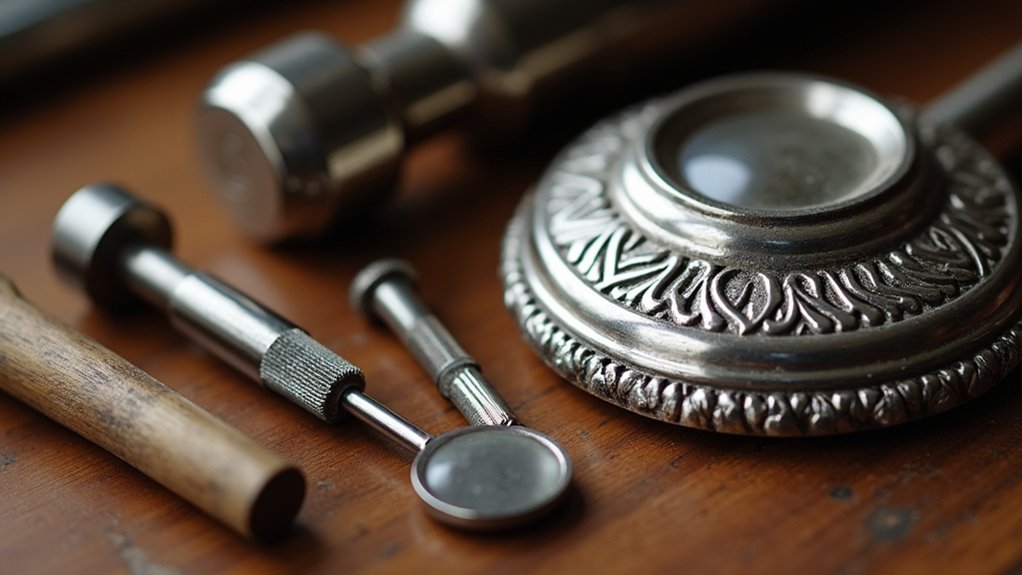

Leave a Reply